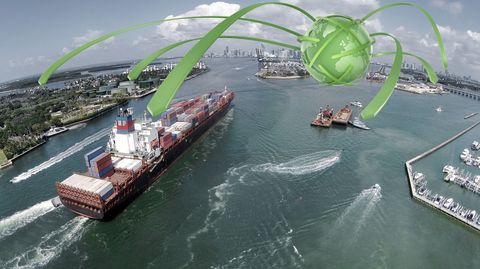One of the most important reforms to European trade in recent times has been the introduction of the Union Customs Code (UCC), the new framework regulation governing the rules and procedures for customs throughout the European Union.
Brought into force on May 1st 2016, the code is designed to facilitate and improve the efficiency of trade across the economic bloc. However, the introduction of such a large-scale legal change involves a great deal of complexity, which is why the EU has launched a UCC Work Programme to manage the transitional process.
Businesses trading with or within the EU need to be aware of the ongoing changes taking place under the Work Programme in order to ensure they remain compliant with an evolving legal framework.
The aim of the UCC
The purpose of the UCC is to streamline European customs legislation and procedures, while providing greater legal certainty and uniformity to businesses, increasing clarity for customs officials, facilitating more efficient transactions and ultimately leading to greater prosperity for the EU.
A key part of this will involve shifting to a paperless, fully electronic and interoperable trading and customs environment, ensuring the system is fit for purpose in the 21st century. It is anticipated that the UCC will be implemented in its full capacity by the end of 2020.
Objectives of the UCC Work Programme
The UCC Work Programme specifically relates to the development and deployment of the electronic systems provided for in the UCC, with a number of projects underway to ensure the new code is able to operate as intended by the 2020 deadline.
According to the European Commission, the aims of the Work Programme are threefold: firstly, to govern the periods during which transitional rules are to be applied, pending the deployment of the new or upgraded systems, and secondly to define projects and systems that will be used to unify the exchange of information, reengineer customs processes and provide economic operators with a wide range of electronic customs services that are consistent across all member states.
Finally, an extensive plan will be laid out to underpin the implementation of these systems, ensuring the UCC is able to achieve its stated goals.
How the individual projects will work
In total, the Work Programme currently consists of 17 individual projects:
- UCC Registered Exporter System - a new system providing information on registered exporters established in GSP countries exporting goods to the EU
- UCC Binding Tariff Information - an upgrade of the existing trans-European EBTI-3 and Surveillance 2 systems
- UCC Customs Decisions - designed to harmonize processes related to EU customs decisions
- Direct trader access to the European Information Systems - ensuring direct and consistent trader access to the new UCC electronic customs systems
- UCC Authorized Economic Operators upgrade - improving business processes related to AEO applications and authorizations
- UCC Economic Operator Registration and Identification System upgrade - adding new functions to the existing trans-European EORI system
- UCC Surveillance 3 - upgrading the Surveillance 2+ system to ensure its alignment to UCC requirements
- UCC Proof of Union Status - creating an EU-wide system to store, manage and retrieve proofs of union status
- UCC New Computerised Transit System upgrade - aligning the existing NCTS system to the new UCC requirements
- UCC Automated Export System - implementing the new-look UCC requirements for exports and exits
- UCC Information Sheets for Special Procedures - developing a system to support and streamline the process of INF data management
- UCC Special Procedures - accelerating and harmonizing special procedures across the EU by providing common business process models
- UCC Notification of Arrival, Presentation Notification and Temporary Storage - defining and automating the processes for arrival notification, goods presentation and declaration for temporary storage
- UCC National Import Systems upgrade - implementing all UCC processes and data requirements relating to the import domain that are not covered by one of the other Work Programme projects
- UCC Centralized Clearance for Import - allowing goods to be placed under a customs procedure using centralized clearance
- UCC Guarantee Management - ensuring the effective and efficient management of different types of guarantees
- UCC Import Control System upgrade - improving data quality and sharing systems to strengthen the safety and security of the supply chain for all modes of transport
More information on these projects can be found here; in the meantime, businesses seeking to stay one step ahead of these changes should invest in MIC's customs and trade compliance software, which helps to ensure you are always on the right track, as our software is constantly updated to reflect changing laws and regulations and deliver a higher degree of customs and regulatory trade compliance.






